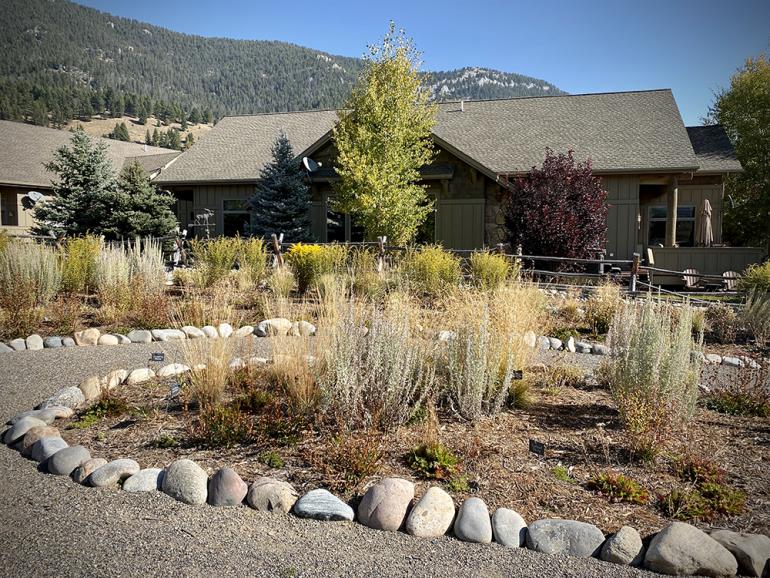Going Native
How and why to landscape more appropriately in Montana.
Every so often an existing word gets revived. Like an old rock & roll star returning to the stage, it becomes popular and brings a newfound respect and a fresh outlook to its meaning. Sustainability is such a word. It seems over the last few years this word has achieved a welcome popularity: making headlines, being incorporated into mission statements, and becoming a positive addition to our vocabulary.
The last 20 years have brought a multitude of sprawling subdivisions, 20-acre ranchettes, and homes carved into the surrounding mountainscape. We know that development will continue around southwest Montana; the question is, how can we make the development more sustainable? Can we help these projects adapt to the natural landscape, or do we continue to have the landscape adapt to the development?
The American pioneer landscape architect Frank J. Scott once said, “A smooth, closely shaven surface of grass is by far the most essential element of beauty on the grounds of a suburban home.” This statement has infiltrated the American psyche and has unfortunately become part of our landscape culture: in the United States there are between 30 and 40 million acres of monoturf lawns. This green carpet oasis requires huge amounts of water, chemicals, and fossil fuels to maintain. We still live in a time when homeowners can be fined for letting their gardens and grass “go native.”
With more knowledge of the Earth’s limited resources, we are beginning to change the way we look at landscaping. Many individuals have utilized native landscaping and there are many more who just need some information to make the right decisions. People are beginning to replace lawn with native grasses, woody shrubs, and wildflowers. Living with the natural landscape has many ecological benefits including conservation of water, improved soil and water quality, increased wildlife habitat, attraction of beneficial pollinating insects, and a higher degree of resistance to pests and disease. Ultimately, a native landscape requires less maintenance once established and is less costly to maintain.
Below are a few tips for creating native and sustainable landscapes.
• Install native trees, shrubs, wildflower and grasses. They attract wildlife, birds, and beneficial insects and are more deer-resistant.
• Reduce or eliminate monoturf . Use naturalistic design and dare to be different from your neighbors while conserving water, reducing chemical use, and saving money on maintenance. Native grasses reduce soil erosion, provide seed heads for food, and need little maintenance once established.
• Utilize reclaimed or natural stone. Install permeable hardscaping such as natural stone walkways and patios to reduce water runoff. Just say no to more concrete.
• During construction projects, preserve existing natural landscapes. Set construction boundaries to reduce damage to the natural landscape and have a plan for revegetation.
• Control noxious weeds. We have an obligation to reduce or eliminate noxious weeds in order to preserve and sustain our native landscapes.
• Consult a professional to gain knowledge and correct installation practices.
Native landscaping has been fighting a tough uphill battle. We need to erase what we’ve been taught and incorporate new ideas into our landscapes. We can use sustainable practices to lessen human impact and encourage species diversity while lowering water and resource use. Break away from the definitions of landscape presented by the media, and create landscapes that are sustainable.
Bill Halpin is the vice president of Greenspace Landscaping in Bozeman.












